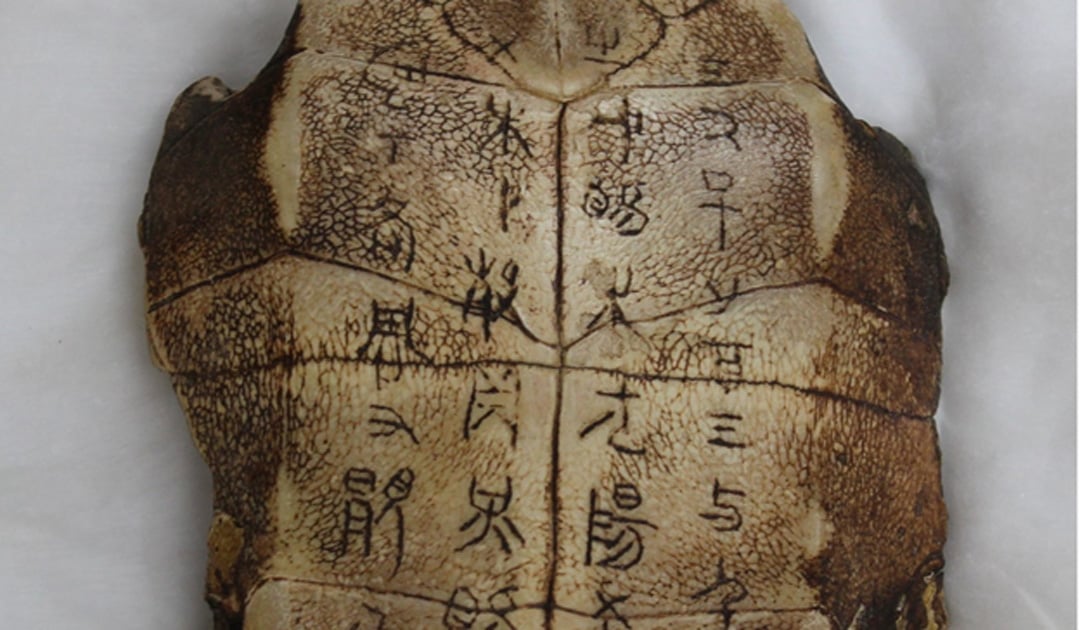China Offers $15,000 for Each Deciphered Character of Mystery Text on Ancient Oracle Bones
The National Museum of Chinese Writing in Anyang is offering a huge reward to anyone able to crack an ancient code found cut into bones and shells dating back more than 3,000 years to the Shang dynasty.
High Motive and Even Higher Prize
South China Morning Post reports that the National Museum of Chinese Writing has recently announced the launch of a reward project, which encourages people from all around the world to decipher thousands of esoteric characters cut into ‘oracle bones’. According to the representatives of the museum in Anyang city, the reward is worth 100,000 yuan (about US$15,000) for each deciphered character. In addition, the museum is offering 50,000 yuan (US$7,500) for anybody who can provide a conclusive explanation for a disputed character.
The inscriptions were carved by ancient fortune-tellers on tortoise shells and animal bones and record several questions on a variety of matters, from weather to taxes. However, much of it remains undeciphered and the meaning of many oracle bones remains elusive.

Oracle Bones and Writing the Future in the Shang Dynasty
As it has been previously reported in an Ancient Origins article, oracle bones are a type of artifact best known for its association with the Shang Dynasty of ancient China (1600-1046 BC). As these artifacts were used for the purpose of divination, the bones came to be called ‘oracle bones’. Apart from providing us with information about the beliefs held by the people of the Shang Dynasty, oracle bones are also significant as they form the earliest known major body of ancient Chinese writing.
The main animal bone that was used for creating the oracle bones was the scapula, or shoulder blade. Oxen seem to be the preferred choice of animal, as the archaeological record has yielded a large amount of oracle bones that were made from this animal’s shoulder blade. Nevertheless, oracle bones have also been found that were made from the shoulder blades of deer, sheep, and pigs. As for the second material, it was the plastron (the nearly flat underside of the turtle) that was used. The carapace (the convex upper shell of the turtle) was not suitable for making oracle bones, as it was much more difficult to write on its curved surface.
The inscriptions from the oracle bones were first discovered in 1899 by academician and antiquarian Wang Yirong in Beijing, although a group of Anyang farmers unearthed artifacts way before the professor. During the 20 th century, thousands of oracle bones have been found. Various studies into the oracle bones have showed the way Chinese script developed over time, cast light onto the divinatory practices of the Shang Dynasty.
The process of divining the future with the aid of oracle bones would typically begin with a question asked by a client. These questions involved a diverse range of topics, including meteorological, agricultural and military issues. The diviner would then use a sharp tool to write the question onto the bone / shell, after which a hole / holes would be drilled into it. The oracle bone would then be placed under intense heat until cracks were produced. Finally, these cracks were interpreted by the diviners for their clients.
- Reading Oracle Bones and Writing the Future in the Shang Dynasty
- Ancient Japanese Queen Himiko may have burned animal bones to tell the future
- Archaeologists Discover Undisturbed Tombs of Ancient Nomads in the Cradle of Chinese Civilization

Holes drilled into an oracle bone. (Public Domain)
Decoding Them Has Been a Challenge and the Task is Not Over
After studying nearly 200,000 relics full of inscriptions, archaeologists have discovered nearly 5,000 characters, but only 1,600 of them have been deciphered. According to representatives of the museum, the process of deciphering the characters has entered a period of “strangulation” and needs ‘fresh eyes’ and innovation to understand the hidden meanings. The deciphering program proposed by the institution requires the applicants to provide a hand written report accompanied by a series of recommendations from at least two academic experts. The museum is urging researchers to use cloud computing and big data along with traditional methods to produce more efficient results with their research.
Other than the great amount of money the museum offers to researchers, another great motivation for researchers studying the ancient Chinese texts, is the great historical value of deciphering a character that can piece together the mysterious ancient writing system. Zhu Yanmin, a history professor from Nankai University in Tianjin, stated as South China Morning Post reports, “If we interpret a noun or a verb, it can bring many scripts on oracle bones to life, and we can understand ancient history better,” pointing out how decoding these characters could offer valuable and previously unknown information about ancient Chinese society, science and everyday life.

Chinese Oracle Bones, Shang Dynasty Linden-Museum, Stuttgart (Germany) (CC BY-SA 3.0)
Top image: Undeciphered characters carved into an ancient tortoise shell. Credit: South China Morning Post


















Comments
Why not match these characters and script of Crete "A" ? The era close to the Indo-European character of the ruling elite and the language, apparently related to Sanskrit.
What did you find?
I have already translated this.
What is needed is an algorithmic quantum program that has All characters put into it with the 1600 known understood ones and allow computer to extrapolate words from the known characters, to bring out the unknown as computer learns the language of the 1600 known, using them for a basis for the, lost language. Or just keep digging slowly and find, more stuff !
Is this the best picture they have?
Pages